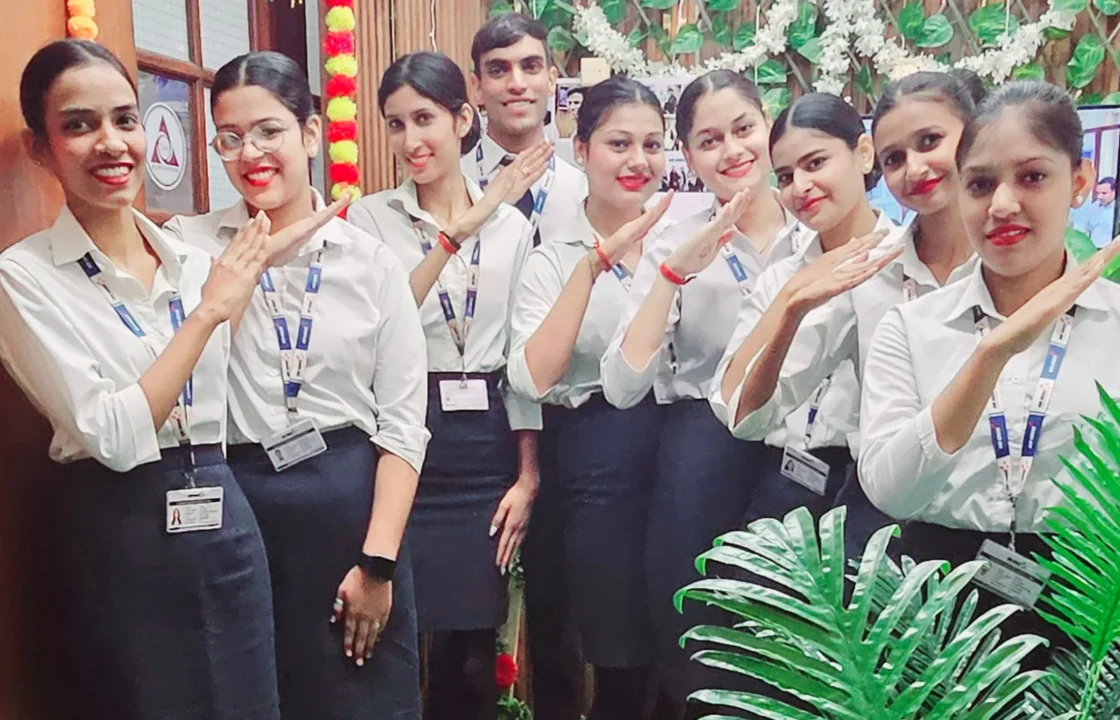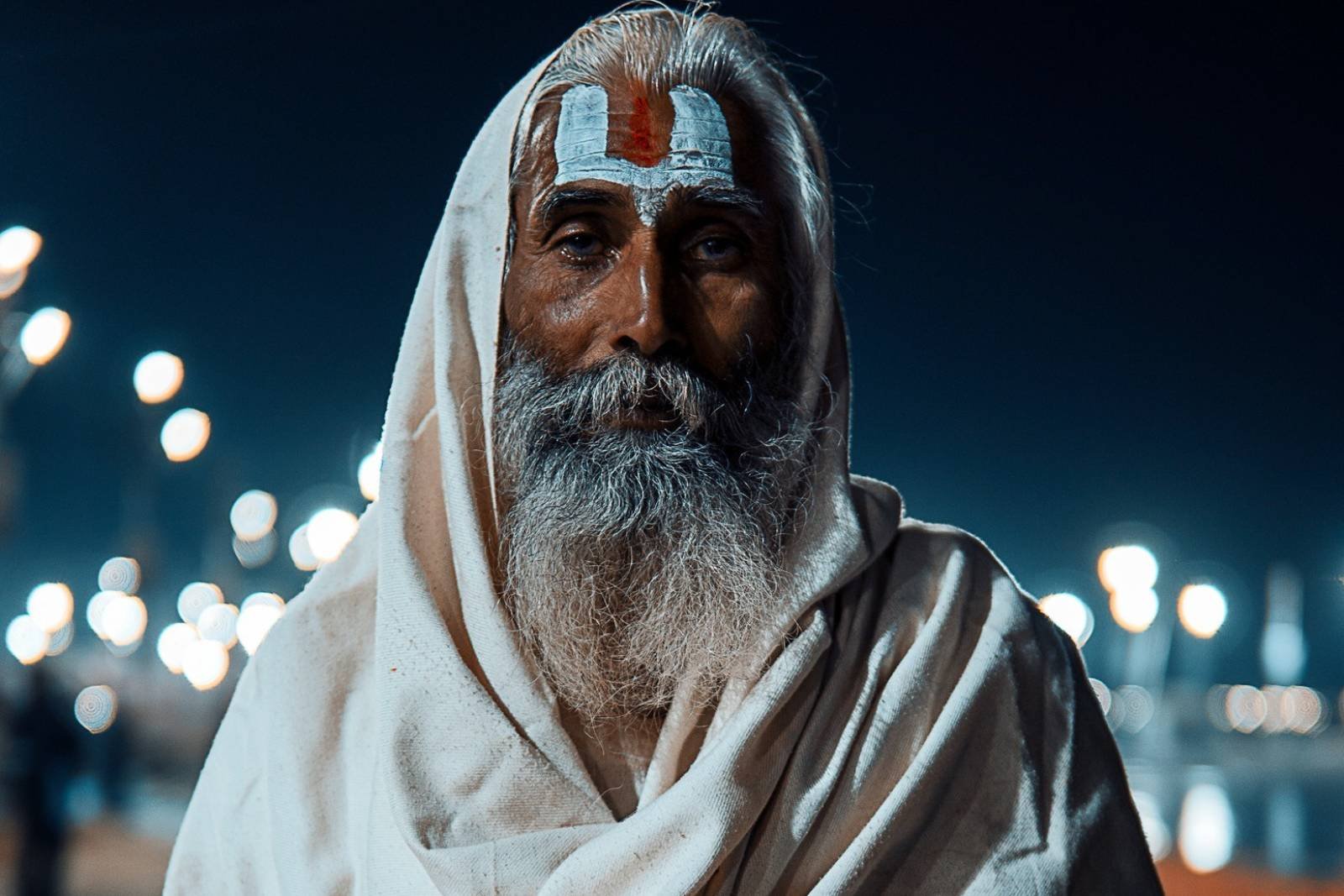
Indian Pilgrimage Tourism
Pilgrimage – A Spiritual way of leading life.
Rahul Bhardwaj – Student @airgraceacademy-com
Indian Pilgrimage Tourism: A pilgrimage is a journey or search of moral or spiritual significance. Many religions attach spiritual importance to particular places. The holy land act as a focal point for the pilgrims.
Such sites may be commemorated with shrines or temples that devotees are encouraged to visit for their own spiritual and mental benefit. Being one of the most ancient civilizations of the world, India has been in contact with almost all the major religions of the world.
A pilgrimage is a ritual journey for visiting heritage sites in order to attain peace and mukti. It is a place where transformation takes place and each step associated with it has significant meaning. Adi Shankaracharya established four peeth (centres) in the four corners of the country. They are Badrinath in North, Kanchipuram in South, Dwarkapuri in West and Jagannath Puri in East.

India is a land of pilgrimage. Travel for religious purposes has been there from the most ancient times. Practically, all religions – Hindu, Buddhism, Jainism and Sikhism have their major and minor pilgrimage centres in different parts of the country.
There are also centres of Sufism, churches and mosques that are visited by people. In fact, to a majority of domestic tourists in India pilgrimage has always been the main motivation. In our country all major temples, shrines and sacred spots are found scattered all along major riverbanks or in the hills.
The confluence of holy rivers called “Sangam”, attract millions of tourists every year when pilgrims assemble there to take holy dip in these rivers. For example on the day of “Sankranti” a bath in holy Ganga water is believed to relieve a person of all the sins.
Indian Pilgrimage Tourism – The Char Dham Yatra

Char dham yatra as defined by Adi Shankaracharya, each dhama represents a particular yuga, with Badrinath representing Satya Yuga, Rameswaram representing Treta Yuga, Dwarka representing Dvapara Yuga, and Puri representing Kali Yuga.
Many Hindus believe visiting these sites can help achieve moksha (liberation or salvation). The Char Dham is not to be confused with the Chota Char Dham, which is a devotional circuit in Uttarakhand.
It is some of the most holy places that a Hindu should visit, at least once in a lifetime. The origin of these four temples here is still not well known and has remained a mysterious fact. Shankaracharya is said to have established the Advaita school of Hinduism, which was also accountable for the origin of the Char Dham.
The four Hindu temples are lying across the four corners of India. The Badrinath temple is in the north, followed by the east temple of Jaganath Puri, the Dwarkadhish Temple located at Dwarka in the west, and Rameswaram in the south, the Ramanathaswamy Temple.
Hindus Believe that their religion demands that they shouls visit these places at least once in their lifetime. This trip has a traditional method of starting the journey from the east, or Puri then moving up in a clockwise direction.
Different pilgrimage tours and Char Dham tourism organize this journey to these places. If we are speaking geographically, then we can see that these places are in a more or less perfect square, falling on the same latitude or longitude.
12 Jyotirlingas
The 12 jyotirlingas are revered shrines dedicated to Lord Shiva, one of the main deities in Hinduism. These jyotirlingas are spread across different regions of India and hold immense religious significance for devotees. Each jyotirlinga is considered a manifestation of the Supreme God in the form of Lord Shiva.
After taking samadhi, the work of Saints is more at the subtle level. Their bodies emit greater quantum of waves of Chaitanya and sattvikta. Just as the samadhi of a Saint is under the surface of earth, so also are the Jyotirlingas and swayambhu Shivalingas.
Since these Shivalingas have greater amount of nirguṇtattva when compared with the other Shivalingas, they constantly emit greater quantum of nirguṇ Chaitanya and sattvikta. This helps in continuously purifying the atmosphere on the earth.
Also, since these waves are constantly emitted towards the region of Hell, they are in continuous combat with the negative energies there. Hence, the earth is constantly protected from the attacks of powerful negative energies from the region of Hell.
The 12 Jyotirlings
Somnath – Gir Somnath In Gujarat
Nageshwar – Daarukavanam In Gujarat
Bhimashankar – Pune In Maharashtra
Trimbakeshwar – Nashik In Maharashtra
Grishneshwar – Aurangabad In Maharashtra
Vaidyanath – Deoghar In Jharkhand
Mahakaleshwar – Ujjain In Madhya Pradesh
Omkareshwar – Khandwa In Madhya Pradesh
Kashi Vishwanath – Varanasi In Uttar Pradesh
Kedarnath – Kedarnath In Uttarakhand
Rameshwaram – Rameswaram Island In Tamil Nadu
Mallikarjuna – Srisailam In Andhra Pradesh
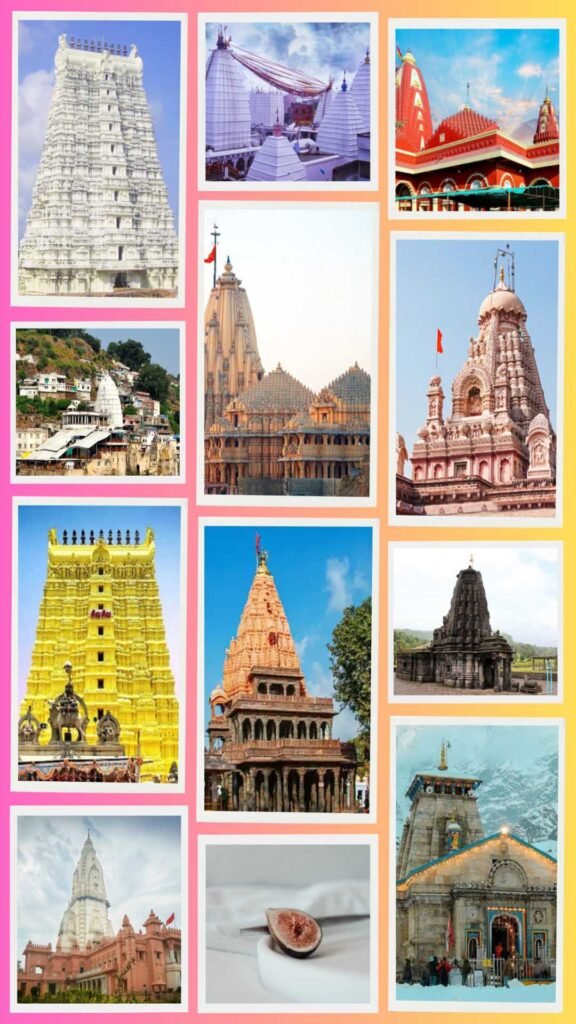
Statistics of Pilgrimage Tourism In India
A study by the Delhi based National Council for Applied Economic Research (NCAER) shows that of the 230 million tourist trips undertaken in India, the largest proportion is made up of religious pilgrimages. 23 million people visited Tirupati, a temple town near the southern tip of India. Tirupati’s annual list of pilgrims is higher than the total number of travelers visiting Mumbai, Delhi, Bangalore and Kolkata put together.
As per Ministry of Tourism, A Many number of projects exclusively to promote Pilgrimage tourism have been sanctioned by the Govt. of india. Theme based circuits are being developed under the Swadesh Darshan Scheme.
Many corridors of many famous temples have been made by the Govt. for Eg. Kashi Vishwanath Corridor , Mahakal Lok in Ujjain , Kedarnath Re-Development , Jagannath Puri Corridor and many more are in the construction phase to promtote the Pilgrimage Tourism.
A study conducted by an NGO on Religious attitudes, behaviour and practices in shows that a significant section of the population in all major religious groups in India reported having undertaken religious tourism over the past two years. A large no. of gathering is been seen in the pilgrimage sites nowadays in respect to other places.
Mystery Unfold Padmanabhaswamy Temple

Dedicated to Lord Vishnu in His Lying Form. Built by the King of Travancore: One of the oldest and most significant Hindu temples is the Padmanabhaswamy Temple in Kerala, India. The King of Travancore, Anizham Thirunal Marthanda Varma, created it in the eighth century AD. The Travancore royal family and subsequent monarchs improved and expanded the temple over time.
The Mysterious Door of Padmanabhaswamy Temple
Indian Pilgrimage Tourism – Adorning the enigmatic door are two massive cobras, serving as guardians to the unknown realm behind them. While the treasures concealed remain a mystery, it is said to be extraordinary.
However, entry is not granted easily; only high-level ‘SADHUS’ with expertise in chanting the ‘GARUDA MANTRA’ can unlock its secrets.
Behind a big door, experts call it chamber B. What’s behind this door with the giant cobras is a
mystery. Legends say bad things will happen to anyone trying to open it.People believe that behind the door and inside chamber B, there’s another room made of solid gold walls. So, it’s said that the greatest treasure in human history is ‘inside the chamber within the chamber.’
In a book called ‘Travancore; A Guidebook for the Visitor (1933)’ by Emily Gilchriest Hatch, it’s mentioned that people tried to open the door in 1931. But, many cobras appeared, scaring them away from the temple, and they never came back.
Some other Pilgrimage Sites of India
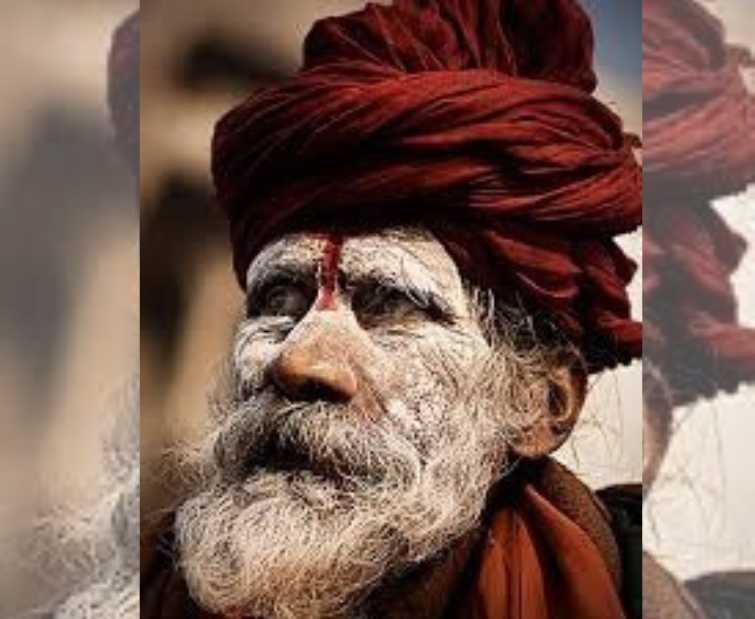
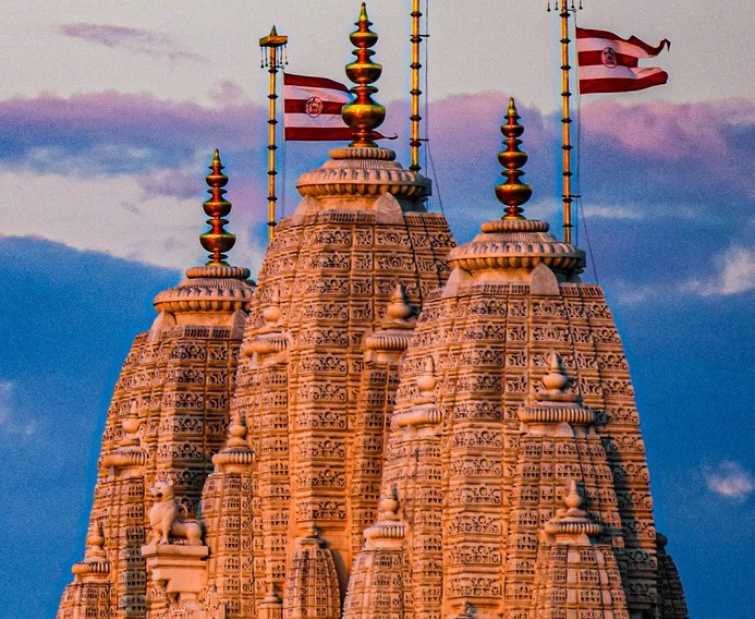
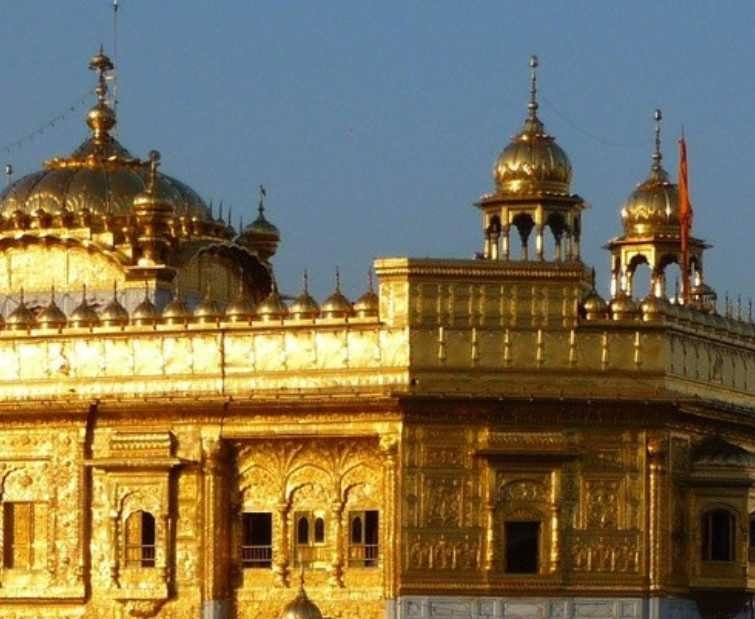
Dwarka; Krishna temple of Dwarkadhish · Somnath; Shiva Jyotir linga temple · Ujjain; Mahakaleswar Jyotir linga Shiva temple · Sanchi; Buddhist stupa · Ajanta caves; 29 Buddhist, Hindu, Jain sacred caves · Ellora; Buddhist, Hindu, Jain caves and Grineshwar Jyotir linga · Mt. Abu; Jain temples ·
Pushkar; Brahma temple, · Ajmer; Shrine of Mu’in al-din Chishti · Amritsar; Hari Mandir · Govindval; Sikh temple · Anandpur Sahib Sikh temple · Vaishno Devi; cave of Kali, Lakshmi and Saraswati · Amarnath; Shiva cave · Leh; Buddhist monasteries · Kurukshetra; Brahma Sarovara ·
Devprayag; Raghunath Vishnu temple · Rishikesh; Laksman Jhula, Neela Kantha Mahadeva temple · Haridwar; Hari-ki-Pairi Ghat, numerous temples · Joshimath; Vasudeva temple · Badrinath; Badrinath temple and nearby five Badri temples · Kedarnath; Jyotir Linga Shiva temple ·
Yamnotri; source of holy Yamuna river · Gangotri; Goddess Ganga temple · Vrindavan; numerous beautiful Krishna temples · Allahabad; Sangam Bath river site · Varanasi / Banaras; numerous temples, ghats and pilgrimage circuits · Saranath; Buddhist holy place · Kushinagar; Holy site where Buddha passed away · Gaya; Vishnupada temple
Issues and Concerns in Pilgrimage Tourism in India

Indian Pilgrimage Tourism – A lack of concentration towards the environmental issues associated with has created both air and water pollution in India. In addition, it has been also identified that the concern of government towards the development of infrastructure and physical environment of pilgrimage due to increasing numbers of foreign tourists is not well maintained, which affects the sustainability and viability of the places visited by tourists.
Based on the article proposed by an Economist, ecological degradation, accommodation, tariffs, catering, water supply, sewage, and sanitation are also other major problems associated with pilgrimage tourism in India that seek immediate attention.
In addition, it has been also suggested by the researchers that it is significant to educate the visitors and prohibit any physical degradation to a place as well as creating effective travel regulations for mitigating negative impacts of tourism.
Given that it is apparent from the marketing drives of travel agencies and tour operators as evidenced in the media that there is a large growth in what is termed the spirituality and religious market segment, pilgrimage tourism must be effectively conducted, be it in India or elsewhere.
A useful description of a spiritual tourist, is that it refers to one who visits a specific place out of their usual environment, with the intention of increasing their level of spiritual meaning and thus spiritual growth and India is an ideal place to do this given the abundance of shrines and temples, for example, in Haridwar and Rishikesh.
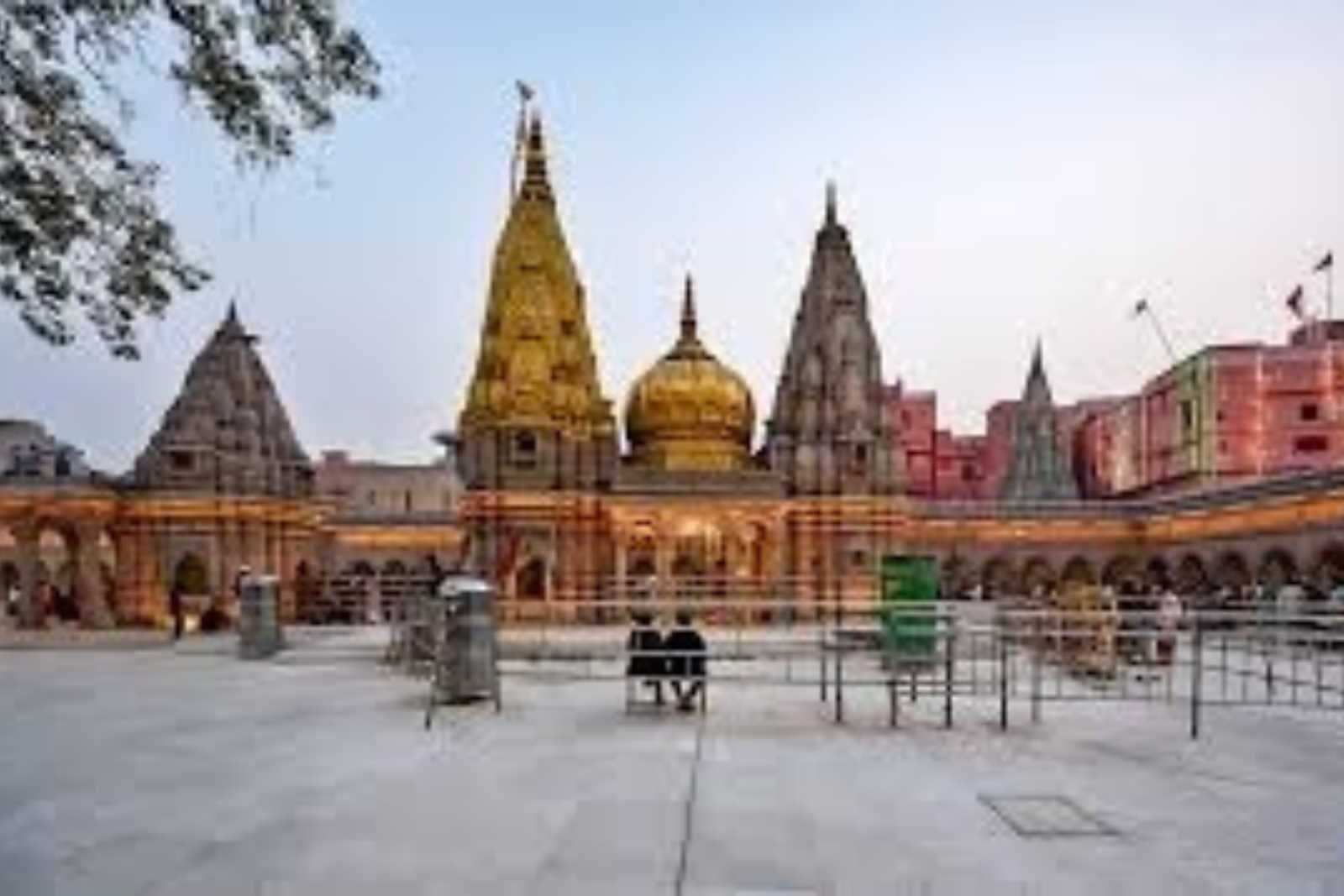
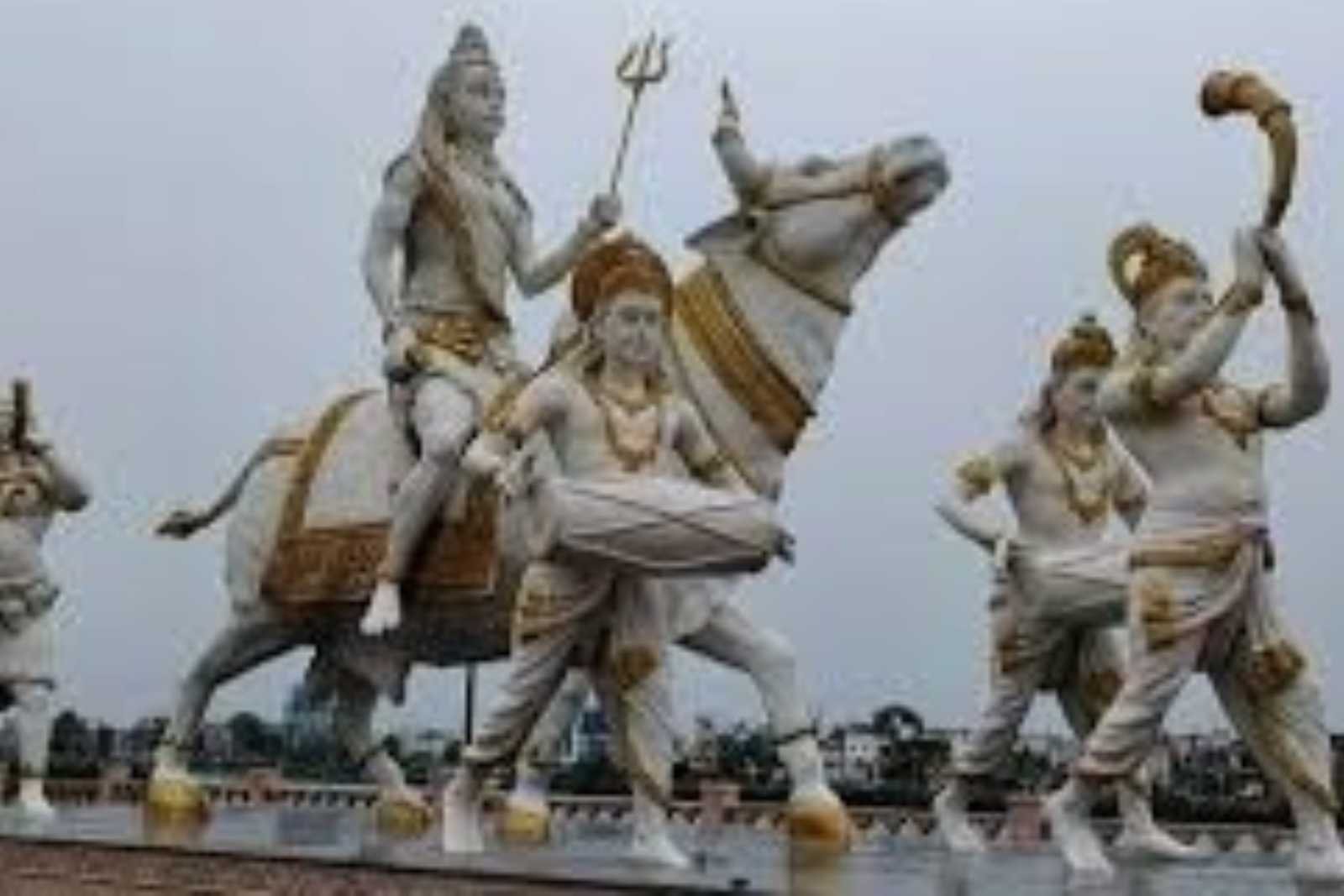

Pilgrim Development Program
The number of pilgrims visiting pilgrimages in rural areas is increasing day by day. The government has started a scheme to provide subsidy to the local self- government institutions. This will enables for the development of pilgrimage in rural areas.
Conclusion



Indian Pilgrimage Tourism – It can be stated that it has a significant impact on the environment and the natural ecosystem in India.
It has been identified that pilgrimage tourism offers growth and revenue towards the economy of a country but its adverse impact on the environment requires the stakeholders to analyze and needs to be addressed. Challenges
including increasing accommodation facilities, dumping of waste in water bodies and landfills are creating a significant threat to the environment.
The growth in urbanization due to the increase in tourist inflows into pilgrimage centers has gained significant consideration from government and religious actors, but the threats associated with the environment have not been focused on enough yet .
The challenges and threats that are induced due to pilgrimage tourism need to be considered by tourists, citizens and governmental bodies and others.
“The UNWTO have defined religious tourism as a kind of tourism that reflects itself with socially responsible actions by respecting the sacred and thorough stewardship of sacred sites.
Religious tourism is a very effective way to drive notion of inclusive and sustainable development . It increases awareness of heritage, which benefits in ensuring religious and cultural preservation.
Religious heritage sites are sources of public education, identity and the engender great pride in locals and create needed job opportunities .
Local communities, if involved are able to be developed and empowered, but they should be wholly involved and integrated into the tourism experience in their area. Religious tourism breaks down intolerance and bridges gaps between diverse peoples.
Wish to read the course details of our Travel and Tourism Course
Author
Rahul Bhardwaj


